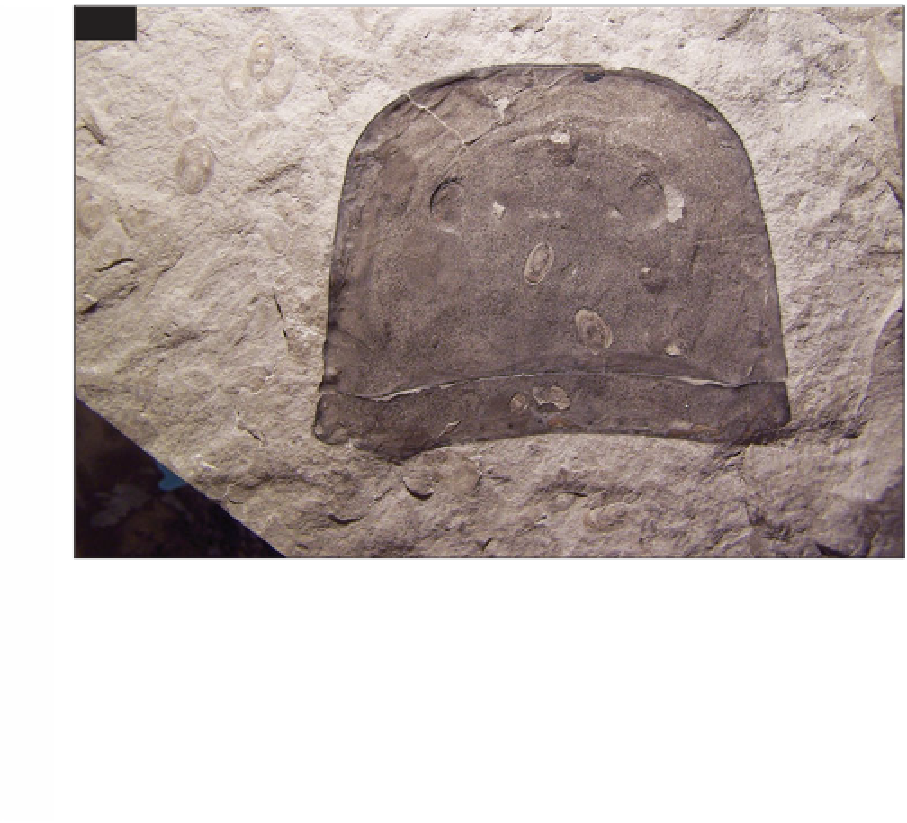Geoscience Reference
In-Depth Information
81
81 Lingulid brachiopods on and around Eurypterus lacustriscarapace. Width of carapace
7.5 cm 3 in.
Brachiopods
The brachiopod
Whitfieldella
occurs
throughout the Bertie Waterlime, but in
many cases it occurs only as molds - the
calcitic shell has been dissolved away, and
in some beds this might have resulted in
complete loss of shells. In others, it is
abundant (see
67
). For example, in some
layers of the Victor Member of the
Fiddlers Green Formation
Whitfieldella
occurs as brachiopod 'pavements' - thin
layers crowded with shells that are clearly
not in life position. Such pavements occur
when a storm erodes the sea floor and
deposits the (now dead) shells as a single
layer. The inarticulate brachiopod
Lingula
also occurs (
81
).
elongate shape with an apparent head
and tail. It comes in various sizes, and one
specimen shows a circular structure at the
'head' end and linear features along its
length. A particularly large circular
specimen (
83
), called 'Ezekiel's Wheel' by
the collector, appears to be a giant form.
We have no idea what this organism is nor,
indeed, whether it was a free swimmer like
a fish, attached to the sea floor like a
coral, buried in the mud, or (and this is
perhaps the most likely idea) it is part of a
plant like
Cooksonia
(see below).
Land plants
Banks (1973) first mentioned the
presence of the unequivocal land
plant
Cooksonia
in the Bertie Waterlime.
Until quite recently, the Bertie Waterlime
was the only horizon yielding well-
preserved Silurian plants with sporangia
(spore-bearing organs) on the whole
Other biota
A rather odd creature found occasionally
in the Williamsville A Waterlime is called
the 'sperm' by collectors (
82
), after its



Search WWH ::

Custom Search